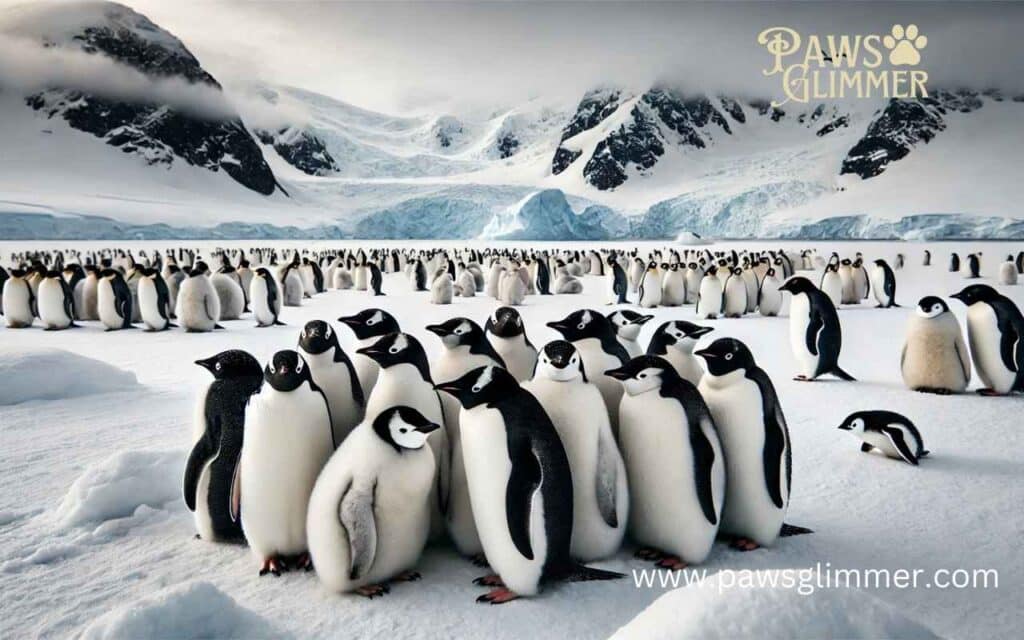How Many Penguins Are Left in the world? Globally, there are approximately 30-31 million penguins divided among 18 species. The most abundant is the Adelie Penguin, boasting a population of around 10 million individuals, while the critically endangered Galapagos Penguin has fewer than 1,200 individuals remaining. Other vulnerable species include the African Penguin and the Northern Rockhopper Penguin. Unfortunately, 12 of the 18 penguin species are experiencing population declines due to various threats.
Climate change, overfishing, and habitat destruction significantly impact penguin populations. Melting sea ice disrupts breeding grounds, while industrial fishing reduces prey availability. Conservation efforts, like marine reserves and habitat protection, are critical to safeguarding the future of these remarkable seabirds.
How Many Penguins Are Left in the World?
As of 2024, researchers estimate that roughly 30-31 million penguins inhabit our planet. The Adelie Penguins represent the largest population with about 10 million individuals, primarily found in Antarctica. However, some species like the Galapagos Penguins have dwindled to merely 1,200 individuals.
Recent surveys conducted by the IUCN show alarming decline rates across multiple species. For instance, Emperor Penguins now number approximately 238,340 breeding pairs, showing a significant decrease from previous decades due to climate change and habitat loss.
The Most Humble Animals on Earth
Penguins: A Brief Overview
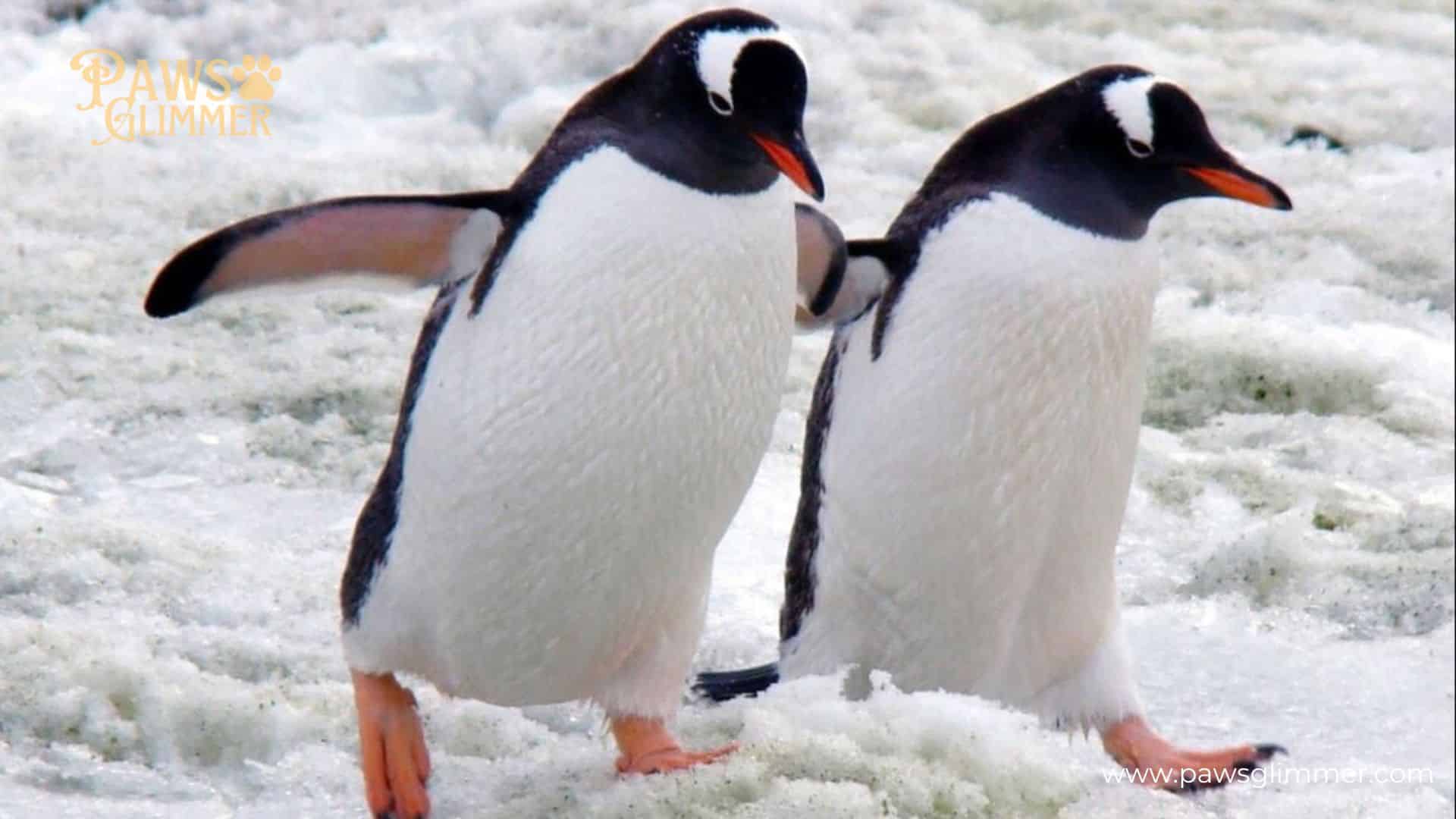
Penguins represent one of nature’s most remarkable examples of species adaptation and wildlife diversity. These flightless aquatic birds have evolved over millions of years, developing from flying ancestors into the specialized marine creatures we know today. Currently, scientists recognize 18 distinct penguin species, each uniquely adapted to their specific habitat ranging from the frozen Antarctic shores to the tropical Galapagos Islands.
The diversity of penguins is fascinating, with sizes varying dramatically across species. The largest, the Emperor Penguin, stands majestically at around 4 feet tall and can weigh up to 88 pounds. In contrast, the smallest species, the Little Penguin of Australia and New Zealand, reaches only 16 inches in height and weighs a mere 2.2 pounds. Here’s a comprehensive overview of the primary penguin species and their characteristics:
| Species | Height | Weight | Primary Location | Notable Features |
|---|---|---|---|---|
| Emperor | 4 ft | 50-88 lbs | Antarctica | Deepest diving penguin |
| King | 3 ft | 24-35 lbs | Sub-Antarctic | Second largest species |
| Adelie | 27-31 in | 8.5-12 lbs | Antarctica | Most widespread Antarctic species |
| Gentoo | 30-35 in | 12-14 lbs | Antarctic Peninsula | Fastest swimming penguin |
| Little | 16 in | 2.2 lbs | Australia/NZ | Smallest species |
Penguin species have developed remarkable adaptations for survival in extreme environments. Their unique features include:
1. Physical Adaptations:
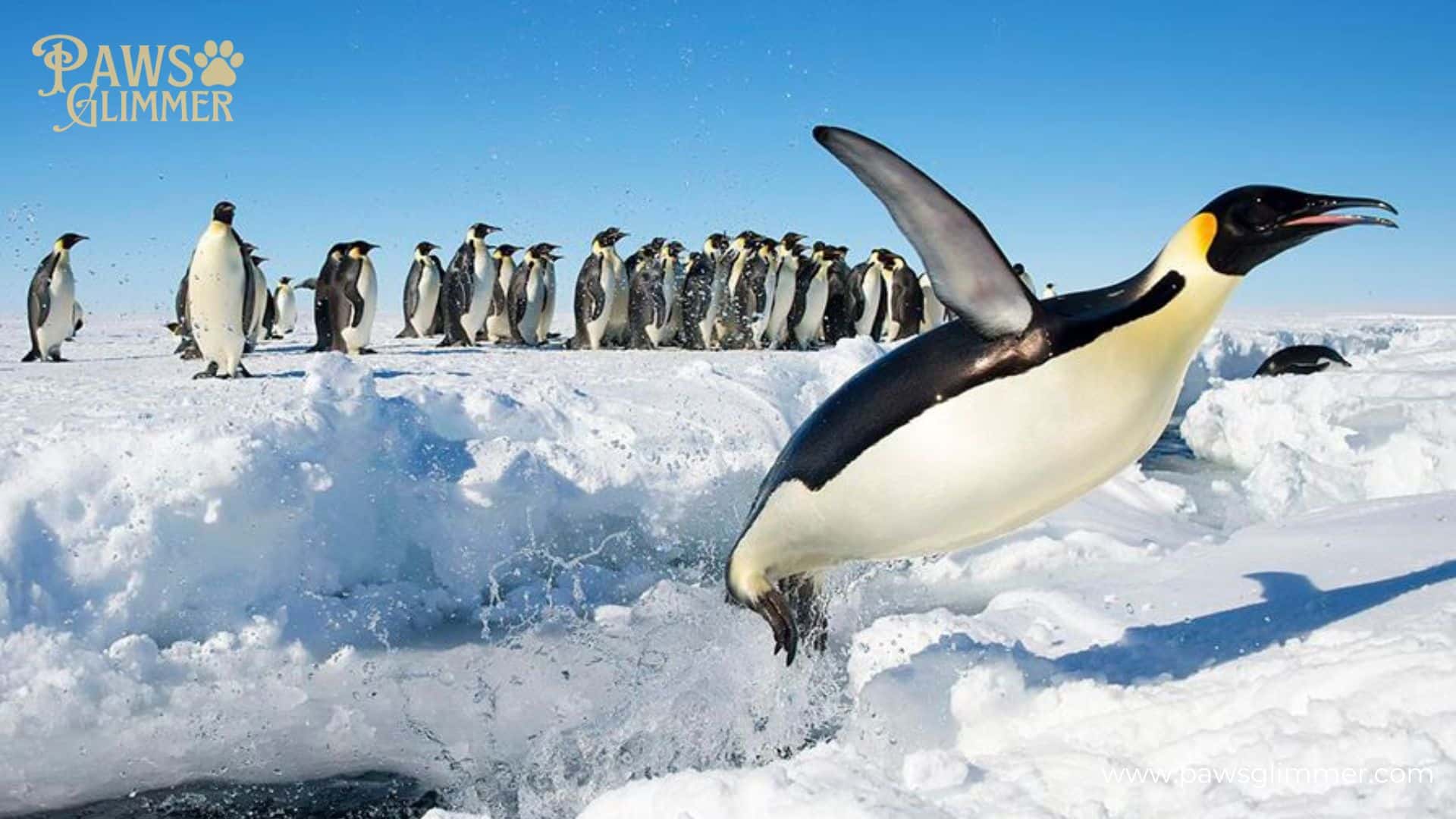
- Dense, waterproof feathers (up to 100 per square inch)
- Specialized wing structure for “flying” underwater
- Counter-current heat exchange system in their extremities
- Thick blubber layer for insulation
- Behavioral Characteristics:
- Complex social structures
- Sophisticated breeding strategies
- Efficient hunting techniques
- Advanced navigation abilities
The global distribution of penguins spans across the Southern Hemisphere, with each species occupying specific niches:
| Geographic Region | Notable Species | Population Characteristics |
|---|---|---|
| Antarctica | Emperor, Adelie | Extreme cold adaptation |
| Sub-Antarctic Islands | King, Royal | More temperate adaptation |
| South America | Humboldt, Magellanic | Warmer climate species |
| Africa | African | Coastal habitat adaptation |
| New Zealand | Yellow-eyed, Little | Mainland breeding |
| Galapagos | Galapagos | Equatorial adaptation |
Marine ecosystem experts emphasize the vital role penguins play as indicator species, reflecting the health of ocean environments. Their feeding habits primarily consist of:
- Krill (primary food source for many species)
- Small fish (anchovies, sardines)
- Squid
- Marine crustaceans
Understanding penguin biology and behavior has been crucial for wildlife conservation efforts. Recent research from the Antarctic Treaty scientific committee has revealed fascinating aspects of penguin life:
Social Behavior:
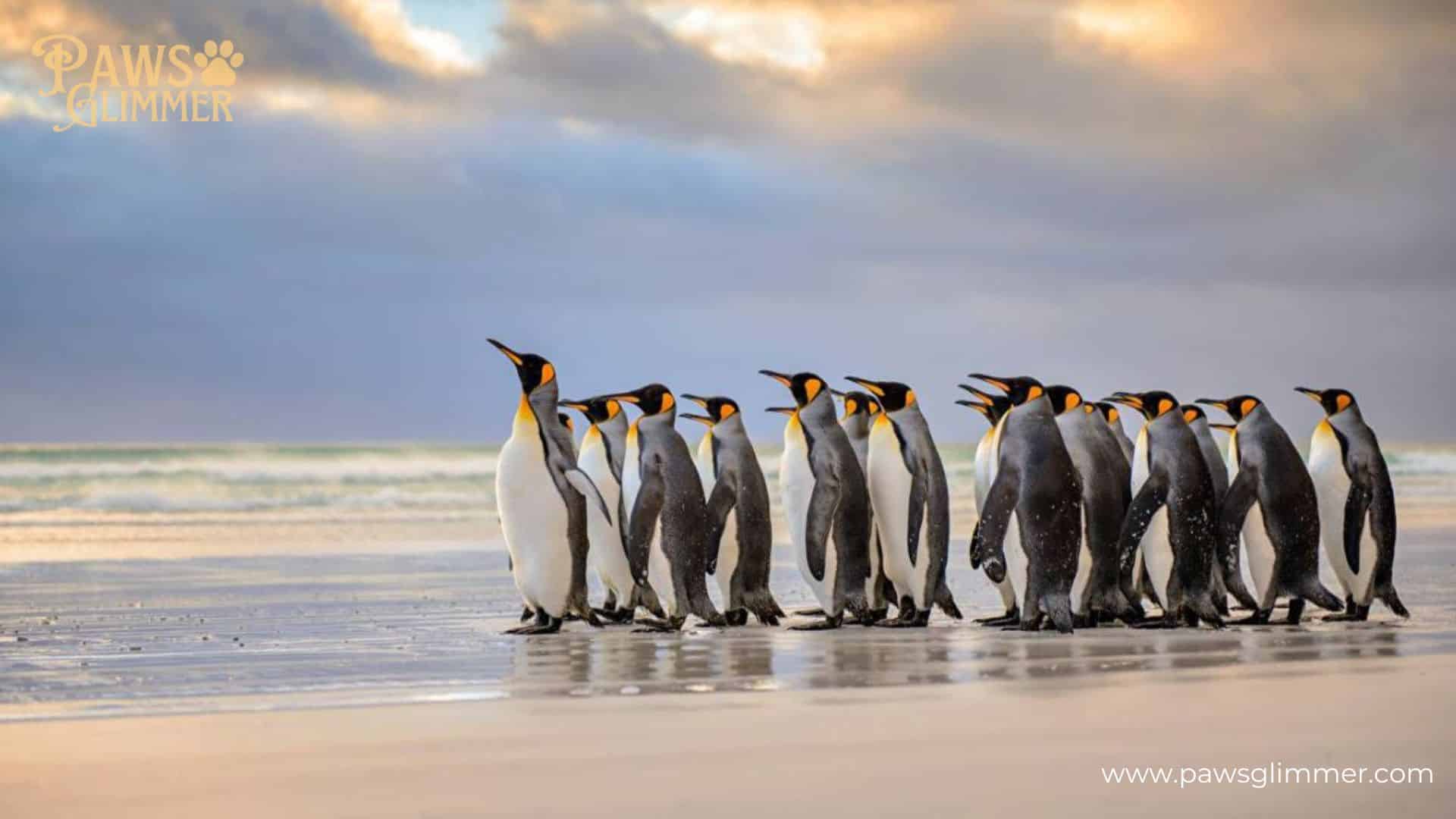
- Complex vocalization patterns
- Strong pair bonding
- Cooperative breeding strategies
- Community-based chick protection
- Hunting Capabilities:
- Diving depths up to 1800 feet (Emperor Penguins)
- Swimming speeds up to 22 mph
- Ability to stay underwater for up to 20 minutes
- Cooperative hunting strategies
This comprehensive overview of penguin species and their characteristics provides essential context for understanding current conservation efforts and the challenges these remarkable birds face in an ever-changing world. Their ability to adapt and survive in some of Earth’s most extreme environments makes them both fascinating subjects of study and important indicators of global environmental health.
Why Do Cats Sleep on Your Neck?
How Many Penguins Are in Antarctica?
The Antarctic continent hosts the largest concentration of penguins globally. Current estimates from the Antarctic Treaty research teams indicate approximately 12 million penguins inhabit the region, with Adelie Penguins being the most numerous species. The Southern Ocean surrounding Antarctica serves as a crucial feeding ground for these populations.
Recent wildlife census data shows that Emperor Penguins primarily breed on sea ice platforms, with colonies spread across 54 known locations. Despite harsh conditions, Antarctica’s isolation has historically protected these populations, though climate change now poses significant challenges.
Are Penguins Endangered?
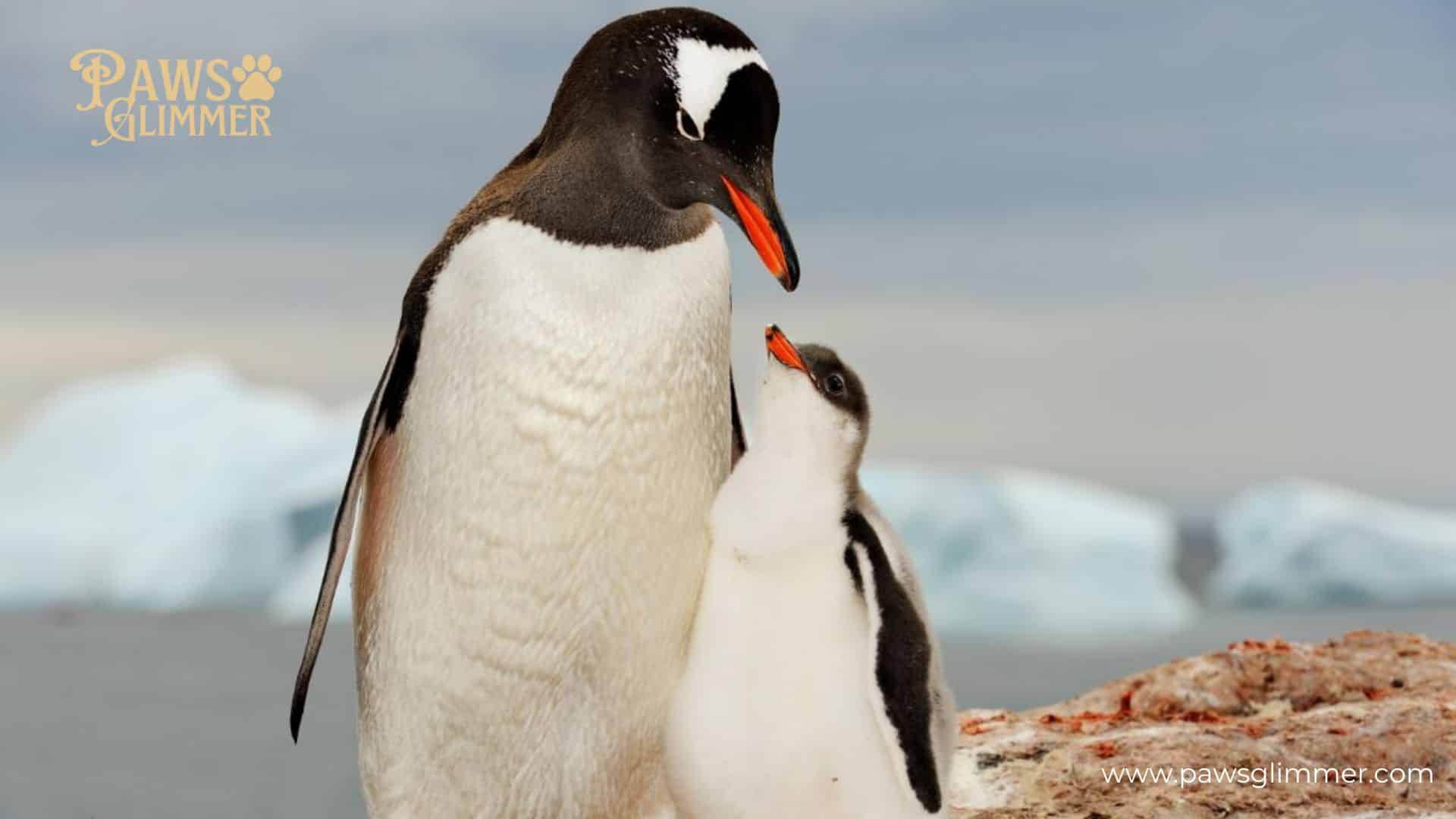
According to the IUCN Red List of Endangered Species, 10 out of 18 penguin species are currently classified as vulnerable or endangered. The Convention on International Trade in Endangered Species (CITES) has placed strict protections on several species, particularly those facing critical population declines.
Wildlife conservation efforts have identified several species at immediate risk. For example, the Yellow-eyed Penguins of New Zealand’s South Island have fewer than 4,000 individuals remaining, while African Penguins have experienced a 98% population decline since the early 1900s.
Why Do Cats Stretch When They See You?
Why Are Penguins Endangered?
The primary threats to penguin survival stem from both natural and human-induced factors. Climate change leads the list of challenges, causing habitat destruction and disrupting traditional feeding patterns. The fishing industry has significantly impacted prey availability, while oil spills and microplastics pollution continue to threaten penguin habitats.
Environmental preservation experts have documented how rising global temperatures affect different species uniquely. For instance, El Niño Southern Oscillation (ENSO) events have become more frequent and intense, disrupting breeding cycles and food availability.
Why Are Yellow-Eyed Penguins Endangered?
The Yellow-eyed Penguins of New Zealand’s South Island, known locally as Hoiho, face multiple threats to their survival. Disease outbreaks, particularly bacterial infections and avian malaria, have devastated populations. Additionally, non-native predators like ferrets, cats, and dogs pose significant risks to chicks and adults alike.
Why Are Galapagos Penguins Endangered?
The world’s northernmost penguins, Galapagos Penguins, struggle with the effects of ENSO events and warming waters. With only 1,200 individuals remaining, these penguins face reduced food availability due to changing ocean currents and overfishing. Their limited geographic range in the Galapagos Islands makes them particularly vulnerable to local environmental changes.
Why Are Erect-Crested Penguins Endangered?
Erect-crested Penguins, native to Bounty and Antipodes Islands, face declining populations due to habitat loss and changing ocean conditions. Recent wildlife surveys indicate that their breeding success has decreased significantly, with prey scarcity being a major factor.
Why Are African Penguins Endangered?
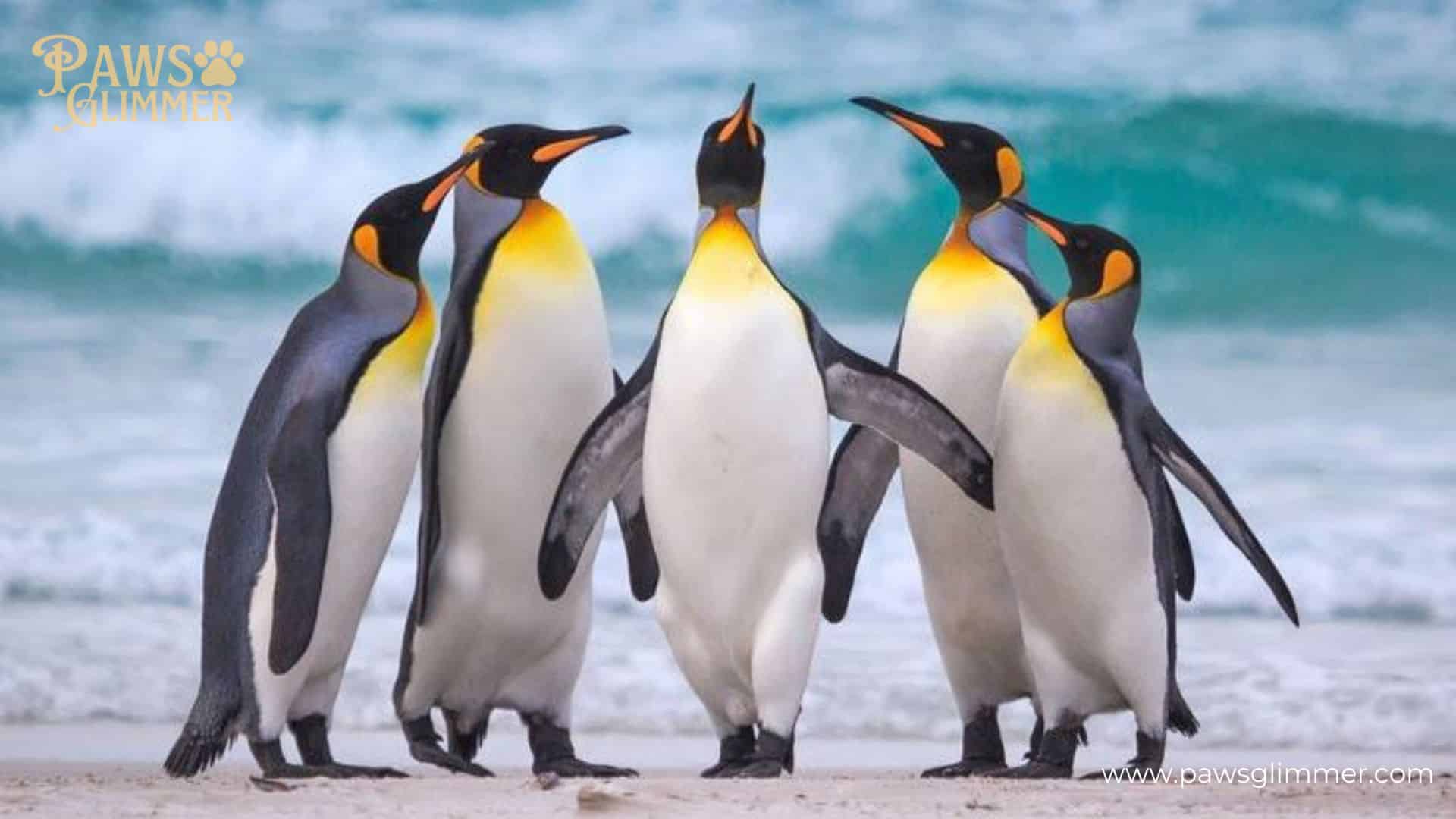
African penguins, also known as Spheniscus demersus, are currently classified as endangered, with their population declining dramatically over the past century. Several key factors contribute to their endangered status:
1. Overfishing
One of the primary threats to African penguins is overfishing in their natural habitat. As commercial fisheries target the same fish species that penguins rely on for food, such as anchovies and sardines, competition for these resources has intensified. This has led to significant food scarcity for the penguins, impacting their ability to feed themselves and their chicks.
2. Climate Change
Climate change poses a significant risk to African penguins. Warming ocean temperatures and changing currents affect the distribution of fish populations, making it more challenging for penguins to find food. Additionally, climate change can lead to extreme weather events, such as storms and flooding, which threaten their nesting sites and overall habitat.
3. Habitat Destruction
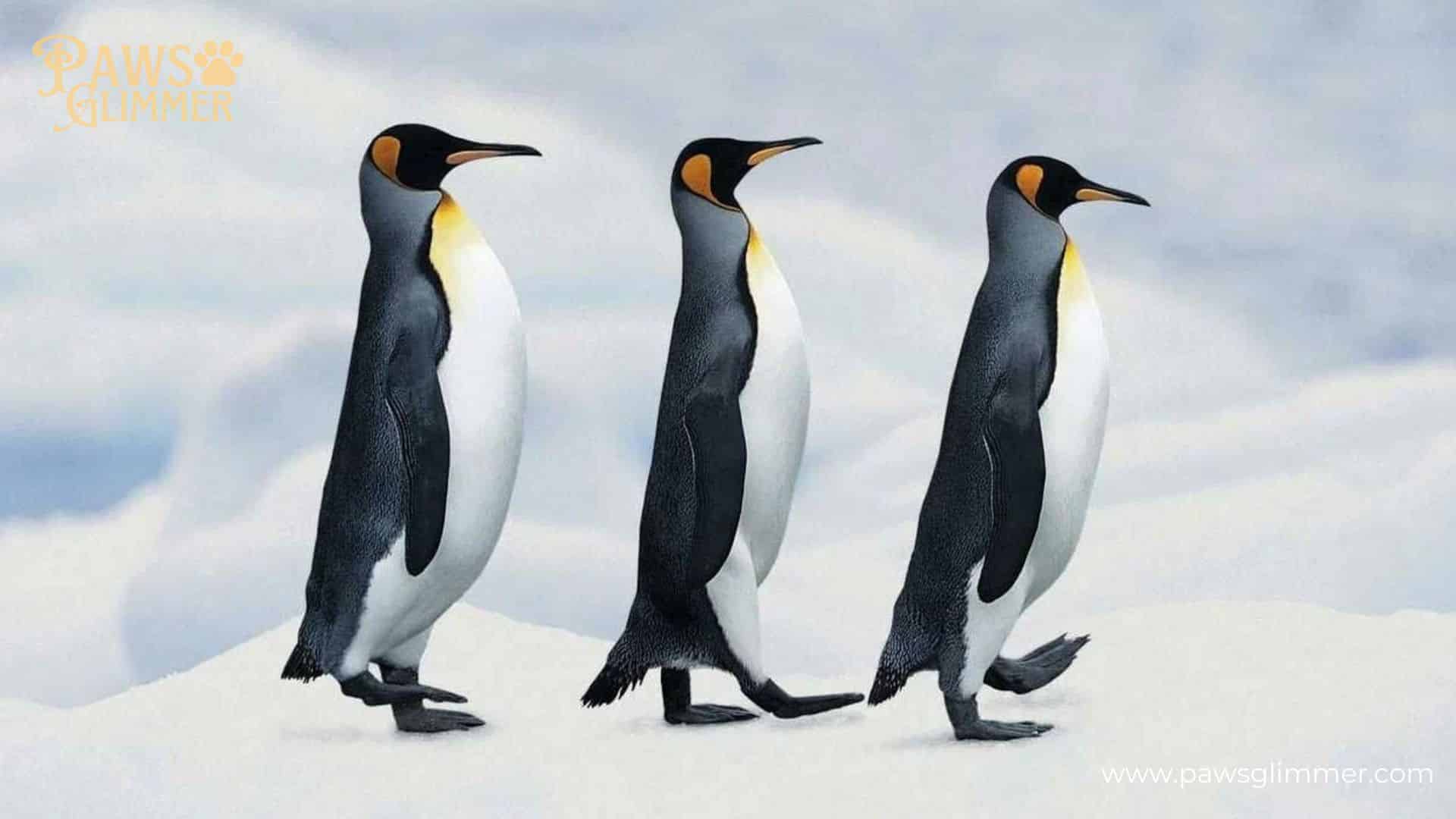
Human activities have historically contributed to habitat destruction for African penguins. The harvesting of guano (bird droppings) from their nesting areas has damaged their habitats, making it difficult for them to find suitable places to breed and raise their young. Furthermore, coastal development and pollution, including oil spills, have further degraded their living environment,
4. Egg Harvesting
In some regions, the practice of harvesting penguin eggs for food has continued, significantly impacting their reproductive success. This illegal activity has historically contributed to population declines and remains a concern for conservation efforts.
5. Natural Predators
While natural predators such as seals and certain gull species pose a threat, the impact of human activities has exacerbated the vulnerability of African penguins. With declining populations, the penguins are less able to withstand predation pressures.
6. Conservation Challenges
Despite efforts to protect African penguins, such as establishing marine protected areas and regulating fishing practices, these measures have often been insufficient. Current fishing restrictions are not extensive enough to provide adequate protection for penguin populations, and ongoing legal battles highlight the urgency of the situation
Top 17 Most Stubborn Animals in the World
Why Are Northern Rockhopper Penguins Endangered?
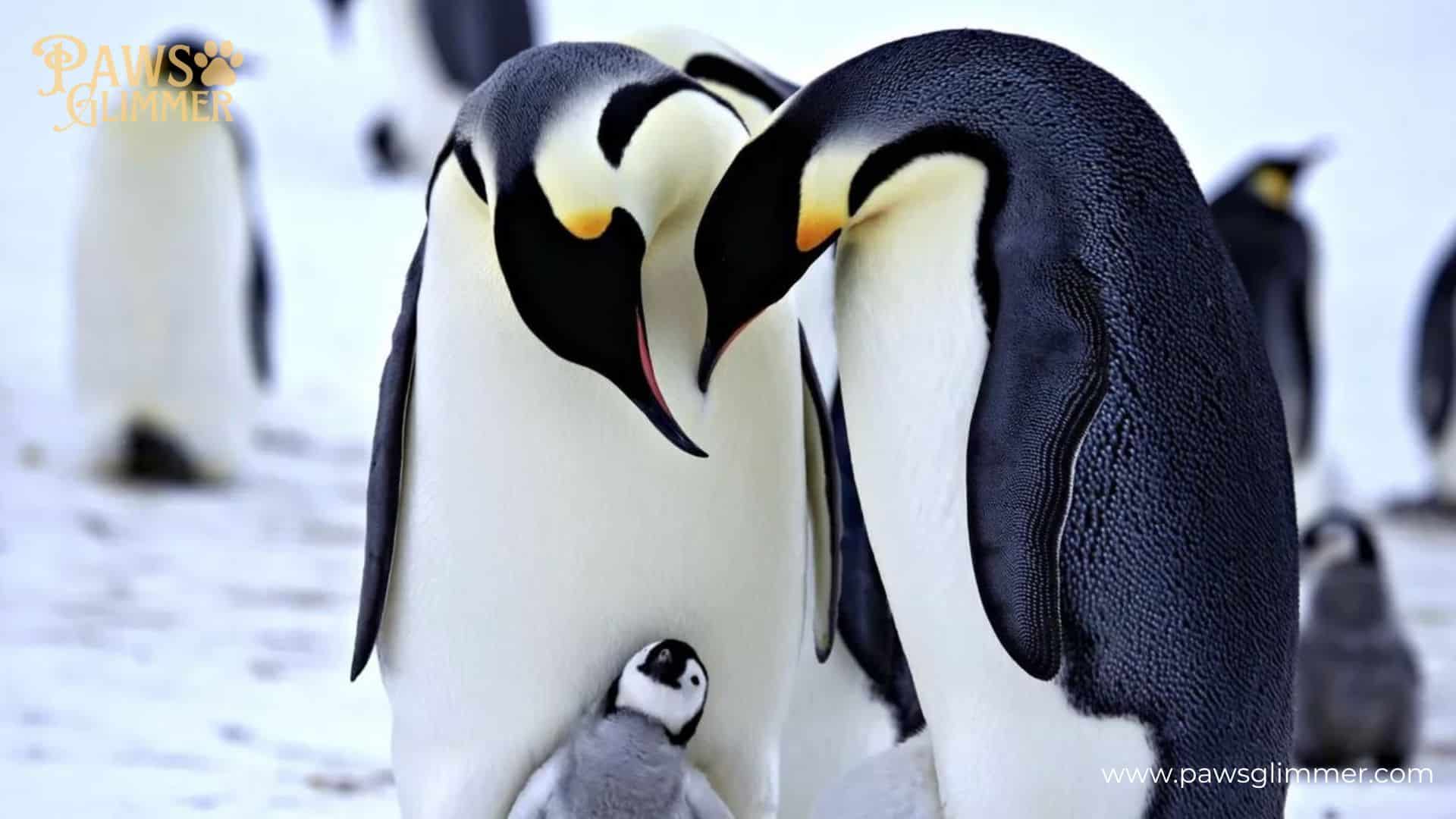
Northern Rockhopper Penguins, found in the Southern Indian Ocean and South Atlantic, face challenges from climate events and commercial fishing. Their population on Tristan da Cunha and Amsterdam Island has declined by over 90% in the last century.
Are Penguins Going Extinct?
Without immediate intervention, several penguin species face potential extinction within this century. The IUCN predicts that species depending heavily on sea ice, like Emperor Penguins, could see population crashes of up to 80% by 2100 if current warming trends continue.
Conservation efforts through protected areas and international agreements have shown some success. For example, small populations of Humboldt Penguins have stabilized thanks to strict wildlife trade regulations and habitat protection measures.
Are Emperor Penguins Endangered?
The status of Emperor Penguins has become increasingly concerning, with the species recently being listed as threatened under the Endangered Species Act. Current estimates show 238,340 breeding pairs remaining, representing a significant decline from historical numbers. These magnificent birds rely heavily on sea ice platforms for breeding and raising their chicks.
Recent wildlife census data from the Antarctic Treaty research teams shows that melting sea ice poses the greatest threat to their survival. Scientists predict that if current climate change trends continue, we could lose up to 99% of Emperor Penguin colonies by 2100.
How Are Penguins Not Extinct Already?
The remarkable resilience of penguins can be attributed to their incredible adaptations and the success of conservation efforts. Through international cooperation under the Antarctic Treaty and various wildlife protection initiatives, some populations have managed to stabilize.
Marine ecosystem preservation and the establishment of protected areas have played crucial roles in their survival. For instance, the creation of marine protected areas in the Southern Ocean has helped preserve crucial feeding grounds for multiple species.
How Can We Help the Penguin?
1. Reduce your fish consumption
Supporting sustainable fishing practices makes a significant difference. Choose seafood certified by sustainable fishing organizations and avoid consuming fish species that penguins rely on. This helps maintain healthy marine wildlife populations and ensures adequate food supplies for penguin colonies.
2. Reduce your CO2 footprint
Embracing carbon-neutral energy solutions and reducing personal carbon emissions helps combat global warming. Simple actions like using public transportation, choosing renewable energy, and improving home energy efficiency contribute to penguin habitat preservation.
3. Reduce your plastic waste
Microplastics pollution severely impacts penguin habitats and their prey. Minimizing single-use plastics, participating in beach cleanups, and proper waste disposal help protect marine ecosystems where penguins live.
4. Donate to a penguin conservation charity
Supporting conservation charity organizations makes a direct impact on penguin survival. Notable organizations include:
| Organization | Focus Area | Impact |
|---|---|---|
| WWF | Global penguin conservation | Habitat protection |
| Southern African Foundation for the Conservation of Coastal Birds | African Penguins | Rehabilitation |
| Global Penguin Society | Worldwide research | Scientific studies |
| Antarctic and Southern Ocean Coalition | Antarctic protection | Policy advocacy |
FAQs
Why Are Adelie Penguins Endangered?
Adelie Penguins are not currently endangered. They are classified as “Least Concern” by the IUCN due to their stable and growing population, estimated at around 10 million individuals. However, threats such as melting sea ice in Antarctica, driven by climate change, could impact their breeding grounds. Predictions suggest colonies north of 70° S may disappear if global temperatures rise above 2°C. This could result in population declines, though some may adapt by moving to new habitats further south.
Why Are Macaroni Penguins Endangered?
Macaroni Penguins are considered “Vulnerable” by the IUCN. Their population faces ongoing declines due to climate change, which affects prey availability and breeding success. Rising ocean temperatures force prey species to migrate to deeper waters, making it harder for Macaroni Penguins to hunt. Increased competition with fur seals and the risk of habitat disturbance, such as oil spills and human activities, further compound the challenges they face.
Why Are Little Penguins Endangered?
Little Penguins are not endangered and are classified as “Least Concern.” Their populations are generally stable, though localized threats exist. These include habitat disturbance, rising sea temperatures, and pollution, which can disrupt prey availability and breeding success. Despite their short lifespans, conservation measures have helped maintain population stability in many regions.
Why Are King Penguins Endangered?
King Penguins are not endangered and are also classified as “Least Concern.” Their population is growing, with a stable presence in sub-Antarctic islands. However, they face long-term threats from climate change, particularly warming seas, which push their prey deeper and farther from breeding sites. Human activities, such as fishing and habitat disturbance, also pose risks. Conservation efforts aim to mitigate these challenges and protect their ecosystems.
Final Thoughts
Penguins are an iconic and cherished group of birds, but their future depends heavily on how we address the environmental challenges they face. With populations ranging from thriving Adelie and King Penguins to critically endangered species like the Galapagos and Yellow-Eyed Penguins, it’s clear that conservation efforts are essential. Climate change, overfishing, and habitat destruction remain significant threats, and without concerted global action, some species may struggle to survive.
While some penguins are adapting to changing conditions, others are less fortunate. By supporting sustainable practices, reducing carbon emissions, and contributing to wildlife conservation efforts, we can help protect these remarkable birds. Their survival is not just a matter of biodiversity but also a reflection of the health of our planet.

“With four years of experience in animal blogging, I delve into the fascinating world of animals, exploring their behaviors, relationships with humans, and the complexities of coexistence. As the author of Paws Glimmer, I provide in-depth insights on everything from understanding animal instincts to identifying species that pose risks to humans. My mission is to inform and foster respect between humans and animals, promoting safer, more aware interactions.”

